previous | home page | this month| e-
Cartoon Conversion
Richard Bell’s Wild West Yorkshire nature diary, Sunday, 2nd November 2008
previous | home page | this month| e-
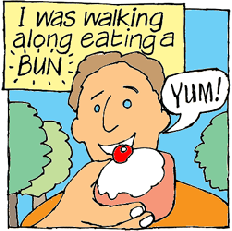
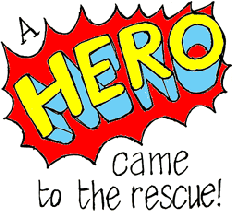
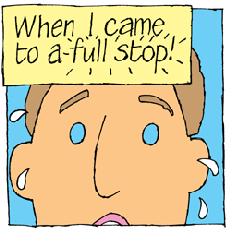

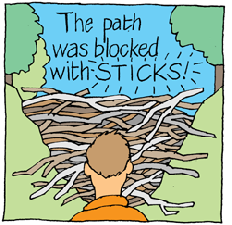
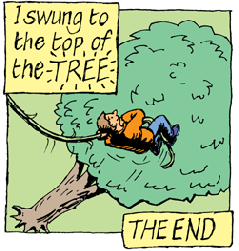
Memory Maps
STILL ON my theme of graphic ways to present information, this comic strip is partly
a way to put some of the suggestions -
You’ve got ‘BUN’, ‘FULL STOP’, ‘STICKS’, ‘HERO’, ‘VINE’ and ‘TREE’.
The point of the simple story format is to enable you to remember the objects in that particular sequence. For the process to be most effective you should imagine sensory experiences with the story, such as the taste and smell of a freshly baked bun and the dry crackly sounds and brittle textures you’d associate with a pile of sticks.
Here the sequence of objects is intended to rhyme with numbers. Initially you have to learn these rhymes but then you can use them for any number you want to remember. For more information, see Buzan’s lively book. So, as you might have guessed, the numbers are:
‘ONE’, ‘DECIMAL POINT’ (ok, that’s not a rhyme, but I needed it), ‘SIX’, ‘ZERO’, ‘NINE’, ‘THREE’.
And why should I want to remember ‘1.6093’?
It’s to save me time when I’m writing my walks book. Since Google appeared, the main
reason that I take my chunky Cambridge Encyclopedia from the shelf is to use the
conversion tables in the appendix. I measure the map in miles but I also include
the equivalent in kilometres. You can imagine how difficult it is when you’ve got
a figure like 4¾ miles to look it up on tables which don’t include every possible
permutation. Now it’s not a problem; I’m unlikely to forget that figure, which is
exactly how many kilometres there are in one mile, so I can simply type it into the
pop-
Note: the figure applies to British statute miles; I believe the American mile is a slightly different length.